
DOC022.97.90252
sensION
™
+ EC71
04/2011, Edition 1
User Manual
Manuel d'utilisation
Manual del usuario
Manual do usuário
用户手册
取扱説明書
사용 설명서
คูมือผูใช

English..................................................................................................................................................................................................3
Français.............................................................................................................................................................................................17
Español..............................................................................................................................................................................................32
Português..........................................................................................................................................................................................47
中文......................................................................................................................................................................................................62
日本語.................................................................................................................................................................................................76
한글......................................................................................................................................................................................................91
ไทย.......................................................................................................................................................................................................105
2

Specifications
Specifications are subject to change without notice.
Specification Details
Dimensions 35 x 20 x 11 cm (13.78 x 7.87 x 4.33 in.)
Weight 1100 g (2.43 lb)
Meter enclosure IP42
Power requirements
(external)
100–240 V, 0.4 A, 47-63 Hz
Meter protection class Class II
Storage temperature –15 to +65 °C (5 to +149 °F)
Operating temperature 0 to 40 °C (41 to 104 °F)
Operating humidity < 80% (non-condensing)
Measuring error (± 1 digit) Conductivity: ≤ 0.1%, Salinity/TDS: ≤ 0.5%,
temperature: ≤ 0.2 °C (0.36 °F)
Reproducibility (± 1 digit) Conductivity: ± 0.1%, Salinity/TDS: ± 0.1 %,
temperature: ± 0.1 °C (0.18 °F)
Data storage 330 results and last 9 calibrations
Connections Conductivity probe with built-in Pt1000 sensor:
telephonic connector; magnetic stirrer: RCA
connector
RS232C for printer or PC: telephonic connector;
external PC keyboard: mini DIN connector
Temperature correction Manual, Pt 1000 temperature probe (A.T.C.), NTC 10
kΩ probe
Measurement display lock Continuous measurement, by stability and by time
Display Liquid crystal, backlit, 128 x 64 dots
Keyboard PET with protective treatment
Certification CE
General information
Revised editions are found on the manufacturer’s website.
Safety information
Please read this entire manual before unpacking, setting up or operating
this
equipment. Pay attention to all danger and caution statements. Failure
to do so could result in serious injury to the operator or damage to the
equipment.
Make sure that the protection provided by this equipment is not impaired,
do not use or install this equipment in any manner other than that specified
in this manual.
Use of hazard information
D A N G E R
Indicates a potentially or imminently hazardous situation which, if not avoided, will
result in death or serious injury.
W A R N I N G
Indicates a potentially or imminently hazardous situation which, if not avoided,
could result in death or serious injury.
C A U T I O N
Indicates a potentially hazardous situation that may result in minor or moderate
injury.
N O T I C E
Indicates a situation which, if not avoided, may cause damage to the instrument.
Information that requires special emphasis.
Precautionary labels
Read all labels and tags attached to the instrument. Personal injury or
damage to the instrument could occur if not observed. A symbol, if noted
on the instrument, will be included with a danger or caution statement in
the manual.
English 3

This symbol, if noted on the instrument, references the instruction
manual for operation and/or safety information.
Electrical equipment marked with this symbol may not be disposed of
in European public disposal systems after 12 August of 2005. In
conformity with European local and national regulations (EU Directive
2002/98/EC),
European electrical equipment users must now return old
or end-of-life equipment to the Producer for disposal at no charge to
the user.
Note: For return for recycling, please contact the equipment producer or supplier
for instructions on how to return end-of-life equipment, producer-supplied electrical
accessories, and all auxillary items for proper disposal.
Product overview
The sensION
™
+ meters are used with probes to measure various
parameters in water.
The sensION
™
+ EC71 meter measures conductivity, salinity, TDS and
temperature.
Measurement data can be stored and transferred to a printer
or PC.
Product components
Refer to Figure 1 to make sure that all components have been received.
If any items are missing or damaged, contact the manufacturer or a sales
representative immediately.
Figure 1 Meter components
1 Standard solutions (147 µS/cm,
1413 µS/cm and 12.88 mS/cm)
5 Rod with o-ring
2 Calibration beakers (with magnetic
bar inside)
6 Probe (included with kits only)
3 Probe holder 7 Meter
4 Power supply
Installation
Assemble the probe holder
Follow the numbered steps to assemble the probe holder and to connect
the magnetic stirrer.
4 English

1 2
3 4
English 5

Connect to AC power
D A N G E R
Electrocution hazard. If this equipment is used outdoors or in potentially
wet locations, a Ground Fault Circuit Interrupt (GFCI/GFI) device must
be used to connect the equipment to its main power source.
The meter can be powered by AC power with the universal power adapter.
1. Select the correct adapter plug for the power outlet from the adapter
kit.
2. Connect the universal power adapter to the meter (Figure 2).
3. Connect the universal power adapter to an AC receptacle (Figure 3).
4. Turn the meter on.
Figure 2 Connector panel
1 Magnetic stirrer connector 4 PC keyboard, mini DIN connector
2 Conductivity probe connector 5 Power supply
3 RS-232 for printer or PC connector
Figure 3 AC power connection
6 English

User interface and navigation
User interface
Keypad description
1 RETURN key: cancel or exit the
current menu screen to the previous
menu screen
5 DOWN key: scroll to other options,
change a value
2 MEASUREMENT key: confirm the
selected option
6 ON/OFF:
turn on or turn off the meter
3 UP key: scroll to other options,
change a value
7 LEFT key: change the measuring
unit, enter numbers and letters
4 RIGHT key: change the measuring
unit, enter numbers and letters
Display description
The
meter display shows the concentration, units, temperature, calibration
status, operator ID, sample ID, date and time.
Figure 4 Single screen display
1 Sample ID 4 Sample temperature (ºC or ºF)
2 Measurement unit and value
(conductivity, salinity, TDS or
salinity)
5 Visual measurement timer
3 Measurement
mode or time and date
Navigation
Use the to return to the previous menu. Use the measure key to take
a sample measurement or to confirm options. Use the arrow keys
to scroll to other options or to change a value. To change the parameters
use the arrow keys
and . Refer to each task for specific instructions.
Start-up
Turn the meter on and off
N O T I C E
Make sure that the probe is connected to the meter before the meter is turned on.
Push to turn on or turn off the meter. If the meter does not turn on, make
sure
that the AC power supply is properly connected to an electrical outlet.
Change the language
The display language is selected when the meter is powered on for the
first time.
1. Use the
or to select a language from a list.
2. Confirm with . The measurement screen shows DATA OUTPUT.
English 7

3. Select
Deactivated if no printer or PC is connected and confirm. Refer
to Select the data output on page 10 for more information about Data
Output.
Standard operations
Calibration
W A R N I N G
Chemical exposure hazard. Obey laboratory safety procedures and wear all of the
the personal protective equipment appropriate to the chemicals that are handled.
Refer to the current material safety data sheets (MSDS) for safety protocols.
Calibration settings
The calibration settings contain Calibration type, Calibration frequency
and Display options.
1. From
the main menu use the
or to select CALIBRATION. Confirm.
2. Use the to enter the calibration menu.
3. Use the or to select the following options:
Option Description
Calibration
type
Calibration type—select Molar Standards, Demal
Standards, NaCl Standards, Calibration to a X value, data
introduction or Theoretical calibration. Refer to Calibration
types for more information.
Cal. frequency Calibration reminder—can be set between 0–99 days
(default
15 days). The display shows the remaining time to
the new calibration. Refer to Set the calibration reminder
on page 9 for more information.
Display Ω Display Resistivity—select YES to show simultaneously
conductivity and resistivity.
Calibration types
Different calibration types can be selected.
1. From
the main menu use the
or to select CALIBRATION. Confirm.
2. Use the to enter the calibration menu.
3. Use the or to select Calibration type.
Option Description
Molar Standards 147 µS/cm, 1413 µS/cm, 12.88 mS/cm and 111.8
mS/cm at 25 °C (77 °F)
Demal Standards 1049 µS/cm, 12.85 mS/cm and 111.31 mS/cm at 25
°C (77 °F)
NaCl Standards 1014.9 µS/cm 25 °C (77 °F)
Calibration to a X
value
To adjust manually any scale value of the measured
conductivity.
Data introduction Manual probe constant introduction.
Theoretical
calibration
The probe calibration data is replaced with C=1.000
cm
-1
.
Calibration procedure
This
procedure is for general use with liquid calibration solutions. Refer to
the documents that are included with each probe for additional information.
Note: Solutions should be stirred during calibration. For more information about the
stirring settings, refer to Change the stirring settings on page 10.
1. Pour the buffers or calibration solutions into the labeled calibration
beakers.
2. From the main menu use the
or and and to select the
CALIBRATION parameter. Confirm.
3. If required select the Operator ID (1 to 10) and confirm.
4. Rinse the probe with deionized water and put the probe into the first
calibration beaker. Be sure that there are no air bubbles in the probe
measuring chamber.
5. Push to Start calibration.
6. Push to measure the first calibration solution.
The next calibration solution is shown.
7. Rinse the probe with deionized water and put the probe into the first
calibration beaker. Be sure that there are no air bubbles in the probe
measuring chamber.
8. Push to measure the second calibration solution.
8 English

The next calibration solution is shown.
9. Rinse the probe with deionized water and put the probe into the first
calibration beaker. Be sure that there are no air bubbles in the probe
measuring chamber.
10. Push to measure the third calibration solution.
When
the calibration is good, the display briefly shows Calibration OK
and then returns to the main menu.
Note: When a printer is connected the print menu opens and the result can be
printed.
View the calibration data
Data from the most recent calibration can be shown.
1. From the main menu use the
or to select DATA LOGGER.
Confirm.
2. Select Display data.
3. Select Calibration data and confirm with . The last calibration data
is shown.
•
pH-the slope and offset values are shown alternating with the
deviation (in %) and calibration temperature.
• Conductivity-the cell constant and calibration temperature for each
standard are shown.
Set the calibration reminder
The calibration reminder can be set between 0 to 23 hours or 1-7 days
(default 0 days). The display shows the remaining time to the new
calibration.
Note: When 0 days is selected, the calibration reminder is turned off.
1. From the main menu use the
or to select CALIBRATION. Confirm.
2. Use the to enter the calibration menu.
3. Use the or to select Cal. frequency and confirm.
4. Use the and to advance to the next step and use the or to
change a value. Confirm.
Push to start the calibration.
Sample measurements
Each probe has specific preparation steps and procedures for taking
sample measurements.
1. From
the main menu use the
or and and to select MEASURE.
Confirm.
2. Use the to change the following settings. Confirm every entry.
Option Description
TC TC—select Linear or Natural waters. Linear: enter a value in %/
°C (default 2.00%/Temperature). Natural waters: Non-linear for
natural waters, according to EN27888
Tref Reference temperature—select between 20 or 25 °C or Other
temperature.
TDS Factor Total dissolved solids (TDS) factor—enter TDS Factor
Measure Stability—select By stability Criterion: ± 1 digit in 6 s. In
continuous—enter
the time interval for the In continuous Acquis.
interval. By time—enter the time interval for data storage or
printing data.
Display Ω Display Resistivity—select YES to show simultaneously
conductivity and resistivity.
3. Push
to start the measurement.
Note: If the measurement is not stabilizing after 120 seconds, the meter turns
automatically into the continuous measurement mode.
Advanced operations
Use a sample ID
The sample ID tag is used to associate readings with a particular sample
location. If assigned, stored data will include this ID.
1. From the main menu use the
or to select SYSTEM. Confirm.
2. Use the or to select Sample ID and confirm.
English 9

3. Use the or to select
Option Description
Automatic A consecutive number will be automatically assigned to every
sample.
Manual A keyboard or a barcode scanner is required to enter the sample
ID
name before taking a measurement (maximum 15 characters).
Select the data output
Data can be stored or transferred to a printer or to a PC.
1. From the main menu use the
or to select SYSTEM. Confirm.
2. Use the or to select Data Output and confirm.
3. Use the or to select
Option Description
Deactivated Select Deactivated if no printer or PC is connected.
For Printer Select Dot matrix printer or Thermal printer.
For Computer Select Terminal, ComLabo or ComLabo Easy. The ComLabo
Software controls several modules, pH and conductivity
meters, automatic burettes, Samplers and so on from a
computer. The ComLabo Easy software gets pH and
conductivity data from a PC.
Change the date and time
The date and time can be changed from the Date / Time menu.
1. From the main menu use the or to select SYSTEM. Confirm.
2. Use the or to select Date / Time and confirm.
3. Use the and to advance to the next step and use the or to
change a value. Confirm.
The current date and time will be shown on the display.
Adjust the display contrast
1. From the main menu use the or to select SYSTEM. Confirm.
2. Use the or to select Display contrast and confirm.
3. Use the and to adjust the contrast of the display and confirm.
Adjust the temperature
The temperature measurement can be adjusted at 25 °C (77 °F) and/or
85 °C (185 °F) to increase accuracy.
1. Put the probe and a reference thermometer in a container of water at
approximately 25 °C and allow the temperature to stabilize.
2. Compare
the temperature read by the meter with that of the reference
thermometer. The difference is the adjustment value for the meter.
Example: reference thermometer: 24.5 °C; meter: 24.3 °C. Adjustment
value: 0.2 °C.
3. Enter the adjustment value for the 25 °C reading:
a. From the main menu use the
or to select SYSTEM. Confirm.
b. Use the or to select Readjust temp. and confirm.
c. Use the or to select 25 °C and confirm.
d. Use the arrow keys to enter the adjustment value for 25 °C.
Confirm.
4. Put the probe and a reference thermometer in a container of water at
approximately 85 °C and allow the temperature to stabilize.
5. Compare the temperature from the meter with that of the reference
thermometer. The difference is the adjustment value for the meter.
a. Use the or to select 85 °C and confirm.
b. Use the arrow keys to enter the adjustment value for 85 °C.
Confirm.
c. Select Save changes and confirm.
Change the stirring settings
The magnetic stirrer can be turned on and the stirring speed can be
changed in the Stirring menu.
10 English

1. From the main menu use the or to select SYSTEM. Confirm.
2. Use the or to select Stirring and confirm.
3. To turn on/off the stirrer push .
4. When the stirrer is turned on, use the or to change the stirring
speed in %.
Note: Use
the
or to change the stirring speed during calibration and during
a measurement.
Change the temperature units
The temperature units can be changed to Celsius or Fahrenheit.
1. From the main menu use the or to select SYSTEM. Confirm.
2. Use the or to select Temperature units and confirm.
3. Use the or to select between Celsius or Fahrenheit and confirm.
Data logger
Display data
The Display data log contains Measurement data, Electrode report and
Calibration
data. The stored data can be send to a printer or to a PC. When
the data log becomes full (400 data points), the oldest data point is deleted
when a new data point is added.
1. From the main menu use the
or to select SYSTEM. Confirm.
2. Use the or to select DATA LOGGER and confirm.
3. Use the or to select Display data and confirm.
4. Use the or to select
Option Description
Measurement data Measurement data—stores automatically each time a
sample is measured
Electrode report Electrode report—stores automatically the electrode
history and measurement conditions
Calibration data Calibration data—stores automatically the current
calibration
Delete data
The entire measurement data or electrode report log can be deleted to
remove data that has already been sent to a printer or PC.
1. From the main menu use the or to select SYSTEM. Confirm.
2. Use the or to select DATA LOGGER and confirm.
3. Use the or to select Erase and confirm.
4. Use the or to select Measurement data or Electrode report and
confirm. Confirm again to delete the data.
The entire log is deleted at once.
Send data to a printer or to a computer
N O T I C E
The data output (printer or PC) needs to be selected first, so that the Print menu
is available (refer to Select the data output on page 10).
Note: Refer to Report output on page 11 to select the report output type.
1. From the main menu use the or to select SYSTEM. Confirm.
2. Use the or to select DATA LOGGER and confirm.
3. Use
the
or to select Print and confirm. Select one of the following
options and confirm with to print the data: Measurement data,
Electrode data, Calibration data, Calibration report or Instrument
condit.
Report output
N O T I C E
The data output (printer or PC) needs to be selected first, so that the Type of report
menu is available (refer to Select the data output on page 10).
Different report output types can be selected when a printer or a PC is
connected.
1. From the main menu use the or to select SYSTEM. Confirm.
2. Use the or to select Type of report and confirm.
English 11

3. When a printer or a computer and Terminal is connected, use the
or to select
Option Description
Reduced Select Several or One sample as an output format
Standard Select Several or One sample as an output format. Select several:
Users: The user name appears on the printed report (17
characters). Header:The company name can be added as a
header (40 characters) and appears on the print report. Identify
sensor:The sensor model and the sensor serial number can be
added and appears on the print report.
GLP Select Several or One sample as an output format. Select several:
Users: The user name appears on the printed report (17
characters). Header:The company name can be added as a
header (40 characters) and appears on the print report. Identify
sensor:The sensor model and the sensor serial number can be
added and appears on the print report.
4. When
a computer is connected and ComLabo Easy (refer to for more
information) is selected, use the
or to select
Option Description
Users The user name appears on the printed report (17
characters).
Identify sensor The sensor model and the sensor serial number can be
added and appears on the print report.
Maintenance
W A R N I N G
Multiple hazards. Do not disassemble the instrument for maintenance. If the
internal components must be cleaned or repaired, contact the manufacturer.
C A U T I O N
Personal injury hazard. Only qualified personnel should conduct the tasks
described in this section of the manual.
Clean the instrument
N O T I C E
Never use cleaning agents such as turpentine, acetone or similar products to clean
the instrument including the display and accessories.
Clean the exterior of the instrument with a moist cloth and a mild soap
solution.
Clean the probe
Clean the probe as needed. Refer to Troubleshooting on page 14 for
more information about cleaning. Refer to the probe documentation for
information about the probe maintenance.
Use the cleaning agents listed in Table 1 for contaminations on the
conductivity probe.
Table 1 Cleaning agents for the conductivity probe
Contamination Cleaning agent
Grease, oils, fats Electrode cleaning solution
Limescale 0.1 N HCl solution
Replace the magnetic stirrer
If
the magnetic stirrer does not start, follow the numbered steps to replace
the magnetic stirrer.
12 English

1 2
English 13

Troubleshooting
Refer
to the following table for common problem messages or symptoms,
possible causes and corrective actions.
Table 2 Calibration warnings and errors
Error/Warning Solution
UNSTABLE READING
Time t> 100 s
Calibrate again.
Examine
the probe: Make sure that the probe is properly
immersed in the sample; make sure that there are no air
bubbles inside the probe measuring chamber; rinse the
probe with ethanol.
Check temperature.
Check the cell.
Make sure the standard temperature is constant during
the calibration.
Examine the probe: Make sure that the probe is properly
immersed in the sample; make sure that there are no air
bubbles inside the probe measuring chamber; rinse the
probe with ethanol.
STANDARD
TEMPERATURE
< 15 °C or > 35 °C
Calibrate again.
The standard temperature must be between 15 and 35
ºC.
Difference C > 30 % Calibrate again.
Examine the probe: Make sure that the probe is properly
immersed in the sample; make sure that there are no air
bubbles inside the probe measuring chamber; rinse the
probe with ethanol; connect a different probe to verify if
problem is with probe or meter.
Examine the standard solution: Use new standard
solution.
C < 0.05 or > C > 50.00
°C
SAME BUFFERS
Buffer or cell in poor
conditions
BUFFER NOT
RECOGNIZED
Difference C > 30 %
SAME STANDARDS
Table 3 Measurement warnings and errors
Error/Warning Solution
23.2 °C
728 µS/cm @ 25 °C
Calibrate again.
EC out of range Examine the probe: Make sure that the probe is properly
immersed
in the sample; make sure that there are no air
bubbles inside the probe measuring chamber; rinse the
probe with ethanol; connect a different probe to verify if
problem is with probe or meter.
Out of range °C Examine the temperature sensor.
Connect a different probe to verify if problem is with
probe or meter.
TC = 0
Impossible to measure
salinity
Modify TC
Time > 150 s Examine the temperature.
Examine the probe: Make sure that the probe is properly
immersed in the sample; make sure that there are no air
bubbles inside the probe measuring chamber; rinse the
probe with ethanol; connect a different probe to verify if
problem is with probe or meter.
Replacement parts and accessories
Note: Product and Article numbers may vary for some selling regions. Contact the
appropriate distributor or refer to the company website for contact information.
Replacement parts
Description Item no.
sensION+ PH3 Lab pH-meter with accessories, without
probe
LPV2000.97.0002
sensION+ PH31 Lab pH-meter, GLP, with accessories,
without probe
LPV2100.97.0002
14 English

Replacement parts and accessories (continued)
Description Item no.
sensION+ MM340 Lab pH & Ion-meter, GLP, 2 channels,
with accessories, without probe
LPV2200.97.0002
sensION+ EC7 Lab conductivity meter, with accessories,
without probe
LPV3010.97.0002
sensION+ EC71 Lab conductivity meter, GLP, with
accessories, without probe
LPV3110.97.0002
sensION+ MM374, 2 channel Lab meter, GLP, accessories,
without probes
LPV4110.97.0002
Consumables
Description Item no.
Conductivity standard solution 147 µS/cm, with certificate, 125
mL
LZW9701.99
Conductivity standard solution 1413 µS/cm, with certificate, 125
mL
LZW9711.99
Conductivity standard 12.88 mS/cm, with certificate, 125 mL LZW9721.99
Conductivity standard 147 µS/cm, with certificate, 250 mL LZW9700.99
Conductivity standard 1413 µS/cm, with certificate, 250 mL LZW9710.99
Conductivity standard 12.88 mS/cm, with certificate, 250 mL LZW9720.99
Enzyme solution 2964349
Pepsin Cleaning Solution 2964349
Electrode cleaning solution 2965249
0.1 N HCl solution 1481253
Ethanol, 95% (Grease, oils, fats) 2378900
Accessories
Description Item no.
Thermal printer, RS232, for sensION+ benchtop LZW8201.99
Thermal paper for printer LZW8201, bag with 5 rolls LZW9117.99
Dot-impact printer, RS232, for sensION+ instruments LZW8200.99
Standard paper for printer LZW8200, bag with 10 rolls LZW9000.99
Ribbon for printer LZW8200, 3 units LZW9001.99
LabCom Easy PC SW, for sensION+ GLP, CD, cable, USB
adapter
LZW8997.99
LabCom PC SW, for sensION+ GLP, CD, cable, USB adapter LZW8999.99
RS232 cable, for sensION+ benchtop instruments LZW9135.99
RS232 cable for sensION+ benchtop, with USB adapter LZW9135USB.99
Magnetic stirrer with sensor holder, for sensION+ MM
benchtop
LZW9319.99
3x50 mL printed beaker for benchtop conductivity calibration LZW9111.99
Three-sensor holder, for sensION+ benchtop instruments LZW9321.99
Holder and clamp for three sensors LZW9155.99
Pyrex glass chamber, continuous flow measurements LZW9118.99
PP protector, electrode storage LZW9161.99
Standard solutions
Conductivity standard solutions
Refer to Table 4 for conductivity values of standard solutions at varying
temperatures.
English 15

Table 4 Conductivity and temperature values
Temperature Conductivity (EC)
°C °F µS/cm µS/cm mS/cm mS/cm
15.0 59 119 1147 10.48 92.5
16.0 60.8 122 1173 10.72 94.4
17.0 62.6 125 1199 10.95 96.3
18.0 64.4 127 1225 11.19 98.2
19.0 66.2 130 1251 11.43 100.1
20.0 68 133 1278 11.67 102.1
21.0 69.8 136 1305 11.91 104.0
22.0 71.6 139 1332 12.15 105.4
23.0 73.4 142 1359 12.39 107.9
24.0 75.2 145 1386 12.64 109.8
25.0 77 147 1413 12.88 111.8
26.0 78.8 150 1440 13.13 113.8
27.0 80.6 153 1467 13.37 115.7
28.0 82.4 156 1494 13.62 —
29.0 84.2 159 1522 13.87 —
30.0 86 162 1549 14.12 —
31.0 87.8 165 1581 14.37 —
32.0 89.6 168 1609 14.62 —
33.0 91.4 171 1638 14.88 —
34.0 93.2 174 1667 15.13 —
35.0 95 177 1696 15.39 —
16 English

Caractéristiques techniques
Les caractéristiques techniques peuvent être modifiées sans préavis.
Caractéristiques Détails
Dimensions 35 x 20 x 11 cm (13,78 x 7,87 x 4,33 po)
Poids 1 100 g (2,43 lb)
Boîtier de l'appareil IP42
Alimentation (externe) 100–240 V, 0,4 A, 47-63 Hz
Classe de protection de
l'instrument
Classe II
Température de stockage –15 à +65 °C (5 à +149 °F)
Température de
fonctionnement
0 à 40 °C (41 à 104 °F)
Humidité de fonctionnement < 80% (sans condensation)
Erreur de mesure (± 1 chiffre) Conductivité : ≤ 0,1 %, salinité/TDS : ≤ 0,5 %,
température : ≤ 0,2 °C (0,36 °F)
Reproductibilité (± 1 chiffre) Conductivité : ± 0,1 %, salinité/TDS : ± 0,1 %,
température : ± 0,1 °C (0,18 °F)
Stockage des données 330 résultats et 9 derniers étalonnages
Connexions Sonde de conductivité avec capteur Pt 1000
intégré : connecteur téléphonique ; agitateur
magnétique : connecteur RCA
RS232C pour imprimante ou PC : connecteur
téléphonique ; clavier PC externe : connecteur
mini-DIN
Correction de température Manuelle, sonde de température Pt 1000
(A.T.C.), sonde NTC 10 kΩ
Verrouillage d'affichage de
mesure
Mesure continue, par stabilité et par durée
Afficheur Cristal liquide, rétroéclairé, 128 x 64 points
Caractéristiques Détails
Clavier PET avec traitement de protection
Certification CE
Généralités
Les éditions révisées se trouvent sur le site Internet du fabricant.
Consignes de sécurité
Veuillez
lire l'ensemble du manuel avant le déballage, la configuration ou
la mise en fonctionnement de cet appareil. Respectez toutes les
déclarations de prudence et d'attention. Le non-respect de cette
procédure peut conduire à des blessures graves de l'opérateur ou à des
dégâts sur le matériel.
Assurez-vous que la protection fournie avec cet appareil ne soit pas
compromise, n'utilisez pas ou n'installez pas cet appareil d'une autre façon
que celle décrite dans ce manuel.
Interprétation des indications de risques
D A N G E R
Indique une situation de danger potentiel ou imminent qui, si elle n'est pas évitée,
entraîne des blessures graves, voire mortelles.
A V E R T I S S E M E N T
Indique une situation de danger potentiel ou imminent qui, si elle n'est pas évitée,
peut entraîner des blessures graves, voire mortelles.
A T T E N T I O N
Indique une situation de danger potentiel qui peut entraîner des blessures
mineures ou légères.
A V I S
Indique une situation qui, si elle n'est pas évitée, peut occasionner
l'endommagement du matériel. Informations nécessitant une mise en avant
particulière.
Français 17

Etiquettes de mise en garde
Lire
toutes les informations et toutes les étiquettes apposées sur l’appareil.
Des personnes peuvent se blesser et le matériel peut être endommagé si
ces instructions ne sont pas respectées. Si un symbole ‘danger’ ou
‘attention’ se trouve sur l’instrument, une explication est indiquée dans le
manuel.
Lorsque ce symbole est présent sur l’instrument, reportez-vous au
manuel d’instructions pour obtenir des informations relatives au
fonctionnement et/ou à la sécurité.
L’équipement électrique portant ce symbole ne peut être mis au rebut
dans
les systèmes de mise au rebut publics européens après le 12 août
2005. Conformément aux règlements nationaux et européens
(Directive 2002/98/EC), les appareils électriques doivent, depuis le 12
août 2005, ne pas être mis au rebut dans les décharges traditionnelles,
mais être, à la fin de leur service, renvoyés par les utilisateurs
européens au fabricant, qui se chargera de les éliminer à ses frais.
Remarque : Pour le retour à des fins de recyclage, veuillez contactez le fabricant
ou le fournisseur d'équipement pour obtenir les instructions sur la façon de
renvoyer l'équipement usé, les accessoires électriques fournis par le fabricant, et
tous les articles auxiliaires pour mise au rebut appropriée.
Présentation du produit
Les appareils de mesure de la série ION
™
+ s'utilisent avec des sondes
pour mesurer différents paramètres dans l'eau.
L'appareil
de mesure sensION
™
+ EC71 mesure la conductivité, la salinité,
le TDS et la température. Les données de mesure peuvent être
enregistrées et transférées vers une imprimante ou un PC.
Composants du produit
Consultez la Figure 1 pour vous assurer que tous les éléments ont bien
été reçus. Si des éléments manquent ou sont endommagés, contactez
immédiatement le fabricant ou un représentant commercial.
Figure 1 Composants de l'appareil
1 Solutions
étalons (147 µS/cm, 1 413
µS/cm et 12,88 mS/cm)
5 Tige avec joint torique
2 Béchers d'étalonnage (avec barre
magnétique)
6 Sonde (comprise uniquement dans
les kits)
3 Support de sonde 7 Appareil de mesure
4 Alimentation
Installation
Monter le support de sonde
Suivez les étapes numérotées afin de monter le support de sonde et de
brancher l'agitateur magnétique.
18 Français

1 2
3 4
Français 19

Branchement sur alimentation CA
D A N G E R
Risque d'électrocution Si cet équipement est utilisé à l'extérieur ou dans
des lieux potentiellement humides, un disjoncteur de fuite à la terre
(GFCI/GFI) doit être utilisé pour le branchement de l'équipement à sa
source d'alimentation secteur.
L'appareil de mesure peut être alimenté sur secteur à l'aide d'un
adaptateur d'alimentation universel.
1. Sélectionnez
la fiche d'adaptateur appropriée à la prise électrique dans
le kit adaptateur.
2. Branchez l'adaptateur d'alimentation universel à l'appareil (Figure 2).
3. Branchez l'adaptateur d'alimentation universel à une prise CA
(Figure 3).
4. Allumez l'appareil.
Figure 2 Panneau des connecteurs
1 Connecteur de l'agitateur
magnétique
4 Clavier PC, connecteur mini-DIN
2 Connecteur de la sonde de
conductivité
5 Alimentation
3 Connecteur RS-232 pour
imprimante ou PC
Figure 3 Branchement sur alimentation CA
20 Français
A página está carregando...
A página está carregando...
A página está carregando...
A página está carregando...
A página está carregando...
A página está carregando...
A página está carregando...
A página está carregando...
A página está carregando...
A página está carregando...
A página está carregando...
A página está carregando...
A página está carregando...
A página está carregando...
A página está carregando...
A página está carregando...
A página está carregando...
A página está carregando...
A página está carregando...
A página está carregando...
A página está carregando...
A página está carregando...
A página está carregando...
A página está carregando...
A página está carregando...
A página está carregando...
A página está carregando...
A página está carregando...
A página está carregando...
A página está carregando...
A página está carregando...
A página está carregando...
A página está carregando...
A página está carregando...
A página está carregando...
A página está carregando...
A página está carregando...
A página está carregando...
A página está carregando...
A página está carregando...
A página está carregando...
A página está carregando...
A página está carregando...
A página está carregando...
A página está carregando...
A página está carregando...
A página está carregando...
A página está carregando...
A página está carregando...
A página está carregando...
A página está carregando...
A página está carregando...
A página está carregando...
A página está carregando...
A página está carregando...
A página está carregando...
A página está carregando...
A página está carregando...
A página está carregando...
A página está carregando...
A página está carregando...
A página está carregando...
A página está carregando...
A página está carregando...
A página está carregando...
A página está carregando...
A página está carregando...
A página está carregando...
A página está carregando...
A página está carregando...
A página está carregando...
A página está carregando...
A página está carregando...
A página está carregando...
A página está carregando...
A página está carregando...
A página está carregando...
A página está carregando...
A página está carregando...
A página está carregando...
A página está carregando...
A página está carregando...
A página está carregando...
A página está carregando...
A página está carregando...
A página está carregando...
A página está carregando...
A página está carregando...
A página está carregando...
A página está carregando...
A página está carregando...
A página está carregando...
A página está carregando...
A página está carregando...
A página está carregando...
A página está carregando...
A página está carregando...
A página está carregando...
A página está carregando...
A página está carregando...
-
 1
1
-
 2
2
-
 3
3
-
 4
4
-
 5
5
-
 6
6
-
 7
7
-
 8
8
-
 9
9
-
 10
10
-
 11
11
-
 12
12
-
 13
13
-
 14
14
-
 15
15
-
 16
16
-
 17
17
-
 18
18
-
 19
19
-
 20
20
-
 21
21
-
 22
22
-
 23
23
-
 24
24
-
 25
25
-
 26
26
-
 27
27
-
 28
28
-
 29
29
-
 30
30
-
 31
31
-
 32
32
-
 33
33
-
 34
34
-
 35
35
-
 36
36
-
 37
37
-
 38
38
-
 39
39
-
 40
40
-
 41
41
-
 42
42
-
 43
43
-
 44
44
-
 45
45
-
 46
46
-
 47
47
-
 48
48
-
 49
49
-
 50
50
-
 51
51
-
 52
52
-
 53
53
-
 54
54
-
 55
55
-
 56
56
-
 57
57
-
 58
58
-
 59
59
-
 60
60
-
 61
61
-
 62
62
-
 63
63
-
 64
64
-
 65
65
-
 66
66
-
 67
67
-
 68
68
-
 69
69
-
 70
70
-
 71
71
-
 72
72
-
 73
73
-
 74
74
-
 75
75
-
 76
76
-
 77
77
-
 78
78
-
 79
79
-
 80
80
-
 81
81
-
 82
82
-
 83
83
-
 84
84
-
 85
85
-
 86
86
-
 87
87
-
 88
88
-
 89
89
-
 90
90
-
 91
91
-
 92
92
-
 93
93
-
 94
94
-
 95
95
-
 96
96
-
 97
97
-
 98
98
-
 99
99
-
 100
100
-
 101
101
-
 102
102
-
 103
103
-
 104
104
-
 105
105
-
 106
106
-
 107
107
-
 108
108
-
 109
109
-
 110
110
-
 111
111
-
 112
112
-
 113
113
-
 114
114
-
 115
115
-
 116
116
-
 117
117
-
 118
118
-
 119
119
-
 120
120
em outras línguas
- español: Hach sensION+ EC71 Manual de usuario
- français: Hach sensION+ EC71 Manuel utilisateur
- English: Hach sensION+ EC71 User manual
- 日本語: Hach sensION+ EC71 ユーザーマニュアル
Artigos relacionados
-
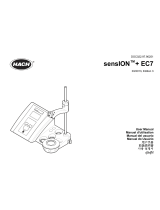 Hach sensION+ EC7 Manual do usuário
Hach sensION+ EC7 Manual do usuário
-
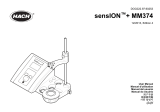 Hach sensION+ MM374 Manual do usuário
Hach sensION+ MM374 Manual do usuário
-
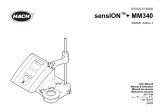 Hach sensION MM340 Manual do usuário
Hach sensION MM340 Manual do usuário
-
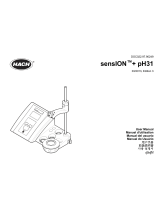 Hach sensIONTM+ pH31 Manual do usuário
Hach sensIONTM+ pH31 Manual do usuário
-
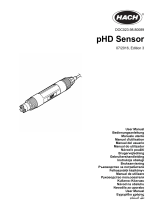 Hach pHD Sensor Manual do usuário
Hach pHD Sensor Manual do usuário
-
Hach sensION+ MM150 DL Manual do usuário
-
Hach sensION+ EC5 Manual do usuário
-
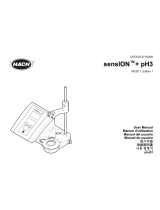 Hach sensION+ pH3 Manual do usuário
Hach sensION+ pH3 Manual do usuário
-
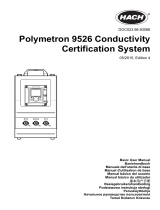 Hach Polymetron 9526 Basic User Manual
Hach Polymetron 9526 Basic User Manual
-
Hach HQ430d Basic User Manual
































































































































